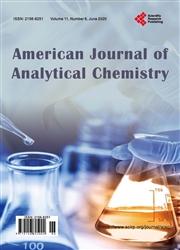Quantification Detection of Probiotic Bacteria Based on Plasmonic Gold-Nanoparticle Sensors
引用次数: 1
Abstract
Probiotic products are of significant research interest in recent years due to their powerful health benefits. One of the most popular commercial probiotic products is probiotic milk drinks containing Lactobacillus bacteria. The quality and effectiveness of such drinks are highly dependent on their bacterial content. However, such information is only available in producers’ advertisements—which may be misleading, and there are few studies done on the true bacterial content of these drinks. More significantly, conventional methods of measuring Lactobacillus bacterial content are laborious and time-consuming. Hence, this research aims to develop a fast and easy test that shows visible results rapidly and can be applied to other Lactobacillus-containing products. Recent developments have presented gold nanoparticles as a strong candidate for various applications in chemistry, physics, and biology for their unique optical properties. One essential optical property of gold nanoparticles is their red or blue color due to plasmon resonance. In this research, strong potential for this property of gold nanoparticles is recognised in a novel method of measuring the bacterial CFU in probiotic milk drinks. Gold nanoparticles function as the key material and indicator in this method as they are found capable of adhering to the Lactobacillus bacteria. The bacterial CFU can then be determined from the amount of gold nanoparticles attached to the bacteria. The eventual measuring scheme established enables fast (15 - 16 times faster than colony counting) and convenient (a sterile environment is not necessary) tests of the bacterial CFU in different probiotic milk drinks and has great potential in other related applications.基于等离子体金纳米粒子传感器的益生菌定量检测
益生菌产品由于其强大的健康益处,近年来引起了人们的极大研究兴趣。最受欢迎的商业益生菌产品之一是含有乳酸杆菌的益生菌乳饮料。这种饮料的质量和有效性在很大程度上取决于它们的细菌含量。然而,这些信息只能在生产商的广告中获得,这可能会产生误导,而且很少有人对这些饮料的真实细菌含量进行研究。更重要的是,测量乳酸杆菌细菌含量的传统方法是费力和耗时的。因此,本研究旨在开发一种快速简便的测试方法,快速显示可见的结果,并可应用于其他含乳酸杆菌的产品。最近的发展使金纳米粒子因其独特的光学性质而成为化学、物理和生物学中各种应用的有力候选者。金纳米粒子的一个基本光学性质是由于等离子体共振而产生的红色或蓝色。在这项研究中,金纳米颗粒这一特性的强大潜力在一种测量益生菌乳饮料中细菌CFU的新方法中得到了认可。金纳米粒子在该方法中起着关键材料和指示剂的作用,因为发现它们能够粘附在乳酸杆菌上。然后可以根据附着在细菌上的金纳米颗粒的量来确定细菌CFU。最终建立的测量方案能够快速(比菌落计数快15-16倍)和方便(不需要无菌环境)检测不同益生菌乳饮料中的细菌CFU,并在其他相关应用中具有巨大潜力。
本文章由计算机程序翻译,如有差异,请以英文原文为准。
求助全文
约1分钟内获得全文
求助全文

 求助内容:
求助内容: 应助结果提醒方式:
应助结果提醒方式:


